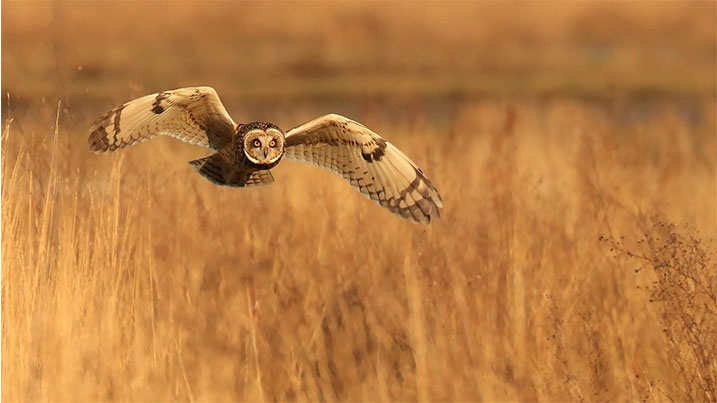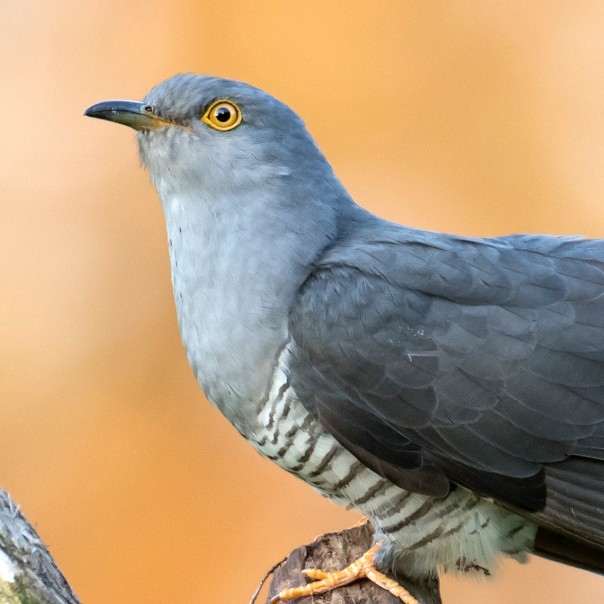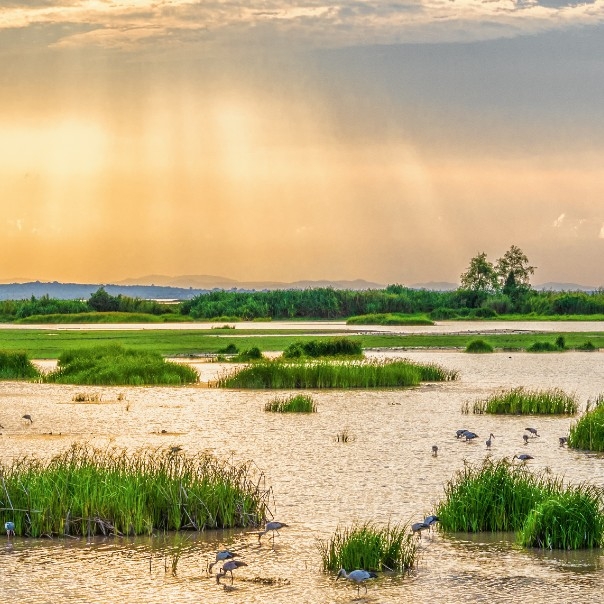Birds of prey found in UK wetlands
With their supersonic vision, effortless aerial acrobatics and ruthless hunting instincts, the UK’s birds of prey (or raptors) are the undisputed masters of the skies.
Did you know that there are three bird of prey species that are specially adapted to wetland habitats? Although many bird of prey species can be seen in wetlands in the UK, none love our watery world as much as these.
Osprey (Pandion haliaetus)
During March and April, the osprey returns to its UK breeding grounds, having wintered in the wetlands of west Africa. This highly specialised raptor is unusual, not only for eating a diet of fish, but also for its habit of plunging into the water to catch them. With its long, buoyant wings, a hunting osprey glides and scans the water below for food near the surface and often hovers with heavy wingbeats when it has located prey. It then tilts and dives at an angle, splashing into the water, talons first. Its talons are specially adapted with spikes and long claws to hold the slippery, struggling fish. The osprey carries large catches below its body, to a perch or nest where they can be eaten at leisure.
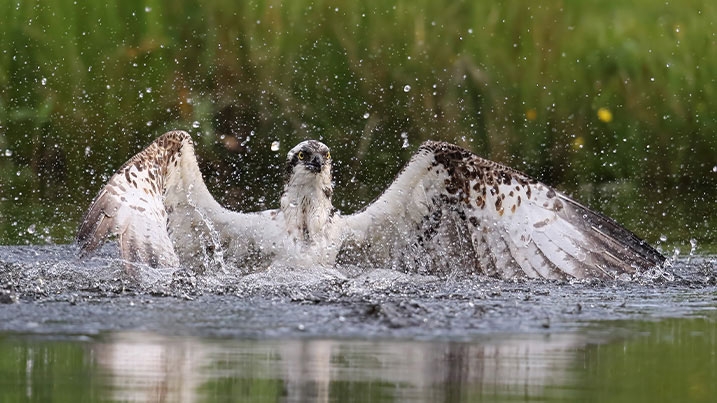
Where to see
In spring, birds can commonly be seen passing overhead at any of our wetland sites, as they move to breeding grounds. At this time of year, they are in a rush and rarely hang around. From August to October, birds begin their southwards migration at a more leisurely pace and might choose to fish for a week or so at the same sites they briefly appeared at in the spring.
Marsh Harrier (Circus aeruginosus)
As big as a buzzard, but with a much longer tail and longer, more slender wings, the marsh harrier is a distinctive wetland raptor. Many are with us year-round, with some wintering birds heading off to Europe in the spring to breed.
They have a characteristic way of hunting, known as ‘quartering’; flying low and very slowly over the ground, with wings held up in a distinctive V, often along a relatively straight transect, while searching for something edible below. The technique has been compared to a golfer walking slowly, head down, looking for a lost ball.
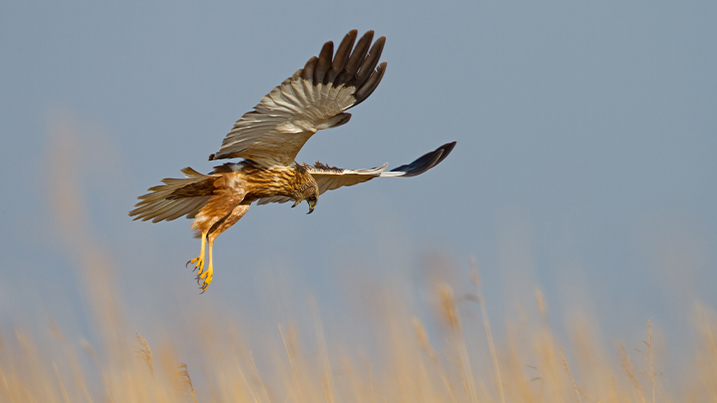
When a harrier spots or flushes prey, such as ducklings, young moorhens and even mammals, it immediately tumbles down, often with an impressive flip over, and stretches its talons forward.
The female is heavy-bodied and dark brown, with a creamy patch on her head, breast and wings. The male is much slimmer and slightly smaller, with a neat tricoloured plumage of brown and grey, with black wing-tips. If you’re lucky, you might spot an immaculate juvenile; dark chocolate colour all over, with a highly contrasting golden crown.
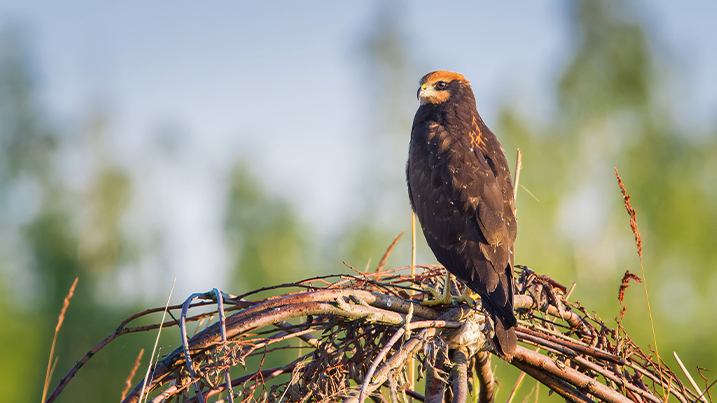
In spring, marsh harrier males will begin to ‘sky-dance’ in a courtship display, twisting, turning and falling from the sky. They’ll also be building nests around their site, which the female will inspect and if she likes what she sees, she will join in the dance, locking talons in a mock food-pass.
Where to see
Marsh harriers can be seen year-round hunting at WWT Welney and WWT Martin Mere (where breeding has been confirmed), with up to half a dozen in autumn. In winter, they regularly roost in the reedbeds at WWT Arundel and WWT Welney, and can be seen hunting at WWT Steart. At WWT Llanelli, watch the upper saltmarsh, and at WWT Slimbridge, scan from the Estuary Tower. Spring and summer is best at WWT Caerlaverock – try the Avenue Tower or Saltcot Observatory.
Find your nearest WWT wetland siteHobby (Falco subbuteo)
The sharp-winged, slimline hobby is a hunter of summer skies. Spending the warm months between late April and September here, mainly in the southern half of the UK, their shape recalls that of another summer bird, the swift, and it has the same supreme effortless mobility in the air.
But the similarity ends there. The hobby is the only raptor that can catch swifts and swallows, as well as other open-country birds, in high-speed aerial pursuit.
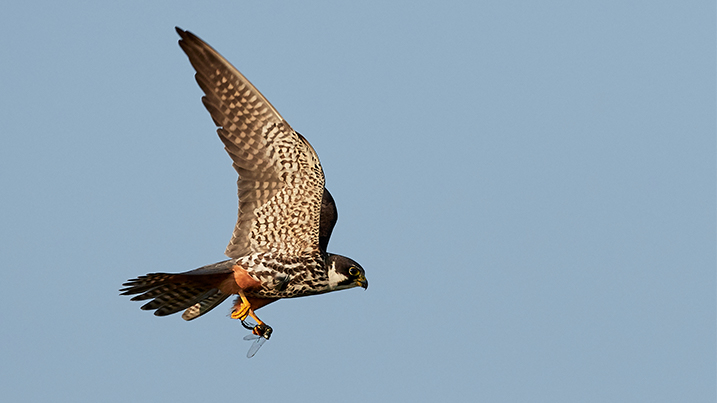
You’re likely to see the hobby in midsummer, when it often sweeps low over wetlands catching its other favourite prey, dragonflies. Speeding over the marshes, they make rapid twists and turns in pursuit of the insects, snatching them in its talons, then transferring them to its bill in mid-air, not missing a beat.
The hobby breeds very late in the season, from July onwards, feeding their young mainly on just-fledged juvenile birds, which are easier to catch than experienced adults.
Where to see
Marvel at the hobby’s agility at WWT Arundel, WWT London, WWT Welney and WWT Steart in summer, when they also reach WWT Martin Mere on the northern edge of their range. Warm days in May, August or September are best to see them hunting at WWT Slimbridge. They are also seen at WWT Llanelli until late October.
Find your nearest WWT wetland siteWhite-tailed eagle (Haliaeetus albicilla)
These huge birds, with a wingspan of almost 2.5 metres, were once widespread across the UK but due to persecution over hundreds of years, by the 1980s they were wiped out. Thanks to reintroduction efforts, there are now hundreds of pairs in Scotland, with birds now also being reintroduced on the south coast of England.
Like they osprey, they are expert catchers of fish but will also take on ducks and geese, and will also scavenge carrion. It’s thought that these apex predators play a key role in keeping the population of lower predators such as buzzards in check, in turn helping the population of birds such as waders to lose less of their young to predation.
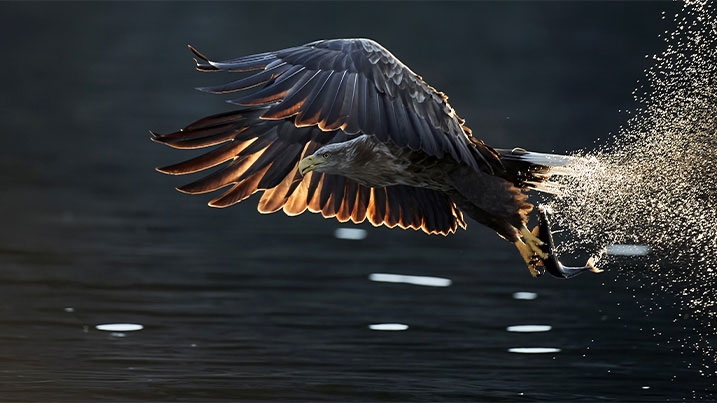
Where to see
Juvenile birds have a tendency to wander and can turn up overhead almost anywhere, but resident birds are most likely to be seen on the Scottish west coast and Western Isles of Mull, Rum and Skye. They’ve also been reintroduced on the east coast.
White-tailed eagles continue to be released on the Isle of Wight in southern England, where the first were released back in 2019.
During winter, wetlands are also important for other birds of prey such as hen harrier, merlin, peregrine and short-eared owls, all of which are attracted by the bounty of biodiversity that a wetland supports, however they aren’t strictly tied to wetland habitats.
